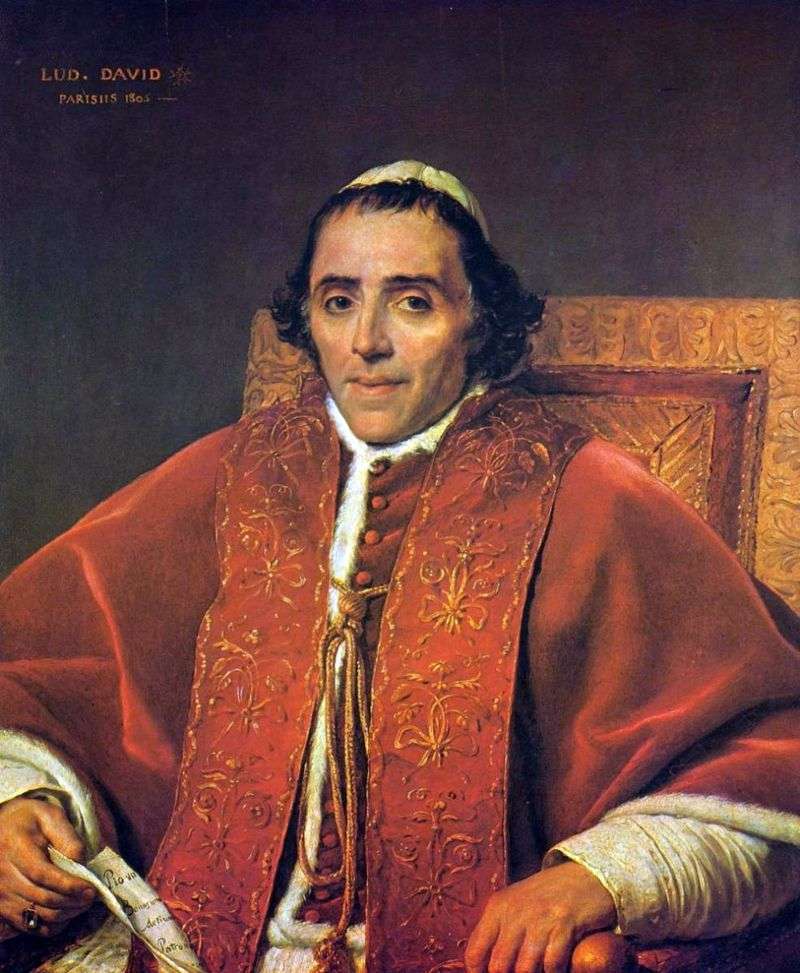
Painting of the French painter Jacques Louis David “Portrait of Pius VII”. The size of the portrait is 86 x 71 cm, canvas, oil. Pius VII is the earl of Ciaramonti, a native of Cesena, a relative and successor to Pius VI. Pius VII, at the age of sixteen, joined the Benedictine Order, was the teacher and abbot of St. Calicst’s monastery. Pius VI appointed him bishop and cardinal. Selected in the pope by the cardinals gathered in Venice, Pius VII returned to Rome, occupied by the Neapolitan troops.
Guided by his secretary of state, Pius VII concluded with Napoleon a concordat that restored the Catholic Church in France, but had to recognize the secularization of church property, the appointment by the government of bishops and, so-called, the declaration of 1682. Similar concordats were concluded by Pius VII with the Italian republics and recognized the secularization of the spiritual possessions in Germany. Using temporal tranquility, he restored the Order of the Jesuits in Sicily.
Hoping to obtain new concessions from Napoleon, Pius VII agreed to come to Paris and crown Napoleon there by the emperor. Monks Napoleon allowed, but no other concessions to the pope was done. There is news that Napoleon invited the pope to stay in France forever, but Pius VII rejected the offer and returned to Rome.
When Napoleon appointed his brother Joseph Joseph to the Neapolitan king and demanded from the pope to join the continental system, Pius VII protested against both measures; Rome was occupied by French troops, and soon after that the Church Region was annexed to France. Pius VII, who had excommunicated Napoleon from the church, was arrested and taken first to Grenoble, then to Savona, and finally to Fontainebleau.
At first the pope held firm and did not recognize the bishops appointed by Napoleon; but the arrest became more severe, and Pius VII, cut off from the world, agreed to approve the bishops, to recognize all the orders of Napoleon and to remain in residence in France; in this sense, a new concordat was concluded. When the empire began to approach the fall, Pius VII renounced all his concessions and, under the auspices of the allies, returned to Rome, having received the former possessions except Avignon.
The winners began to view Pius VII as one of the most important supports of legitimism, and Pius VII skilfully took advantage of the new direction. In 1814, Pope Pius VII restored the Order of the Jesuits; Consalvi concluded concessionary bargains favorable to the church with France, Bavaria and Naples and an agreement with Prussia. The greatest failure of Pius VII at this time was his futile protest against the Viennese congress, which did not restore the spiritual possessions in Germany. Pius VII founded the art museum of Ciaramonti.
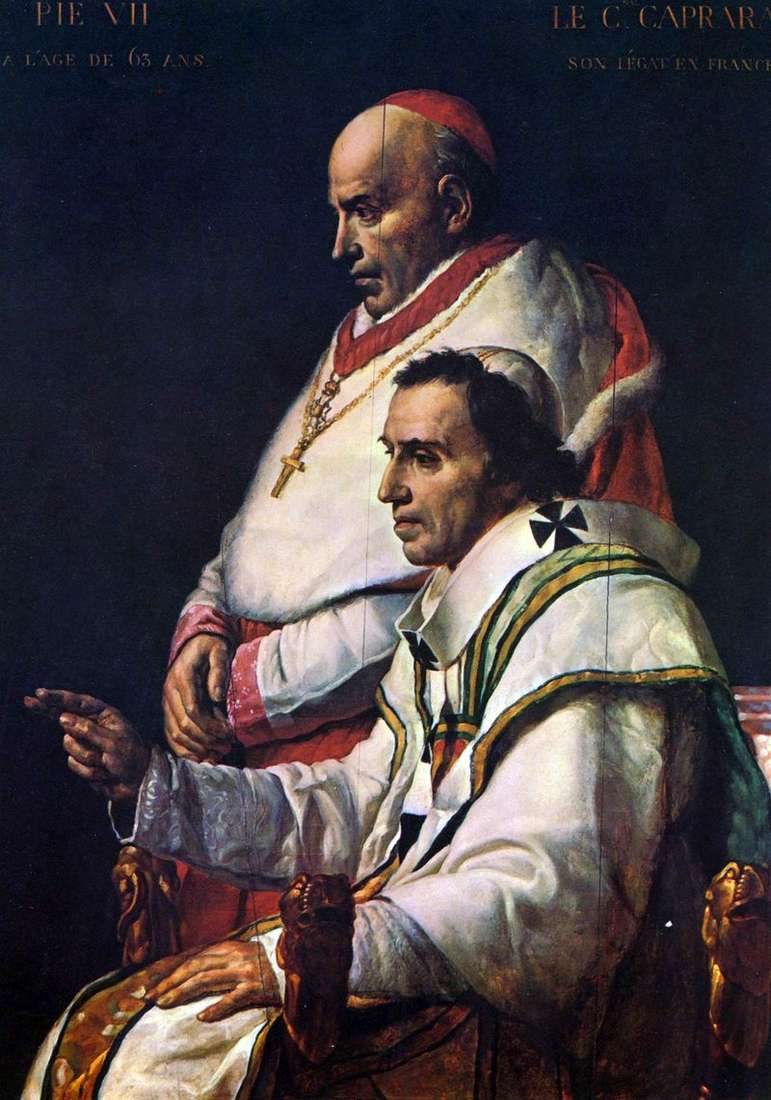 Pope Pius II and Cardinal Caprara by Jacques Louis David
Pope Pius II and Cardinal Caprara by Jacques Louis David Pope Pius VI by Pompeo Batoni
Pope Pius VI by Pompeo Batoni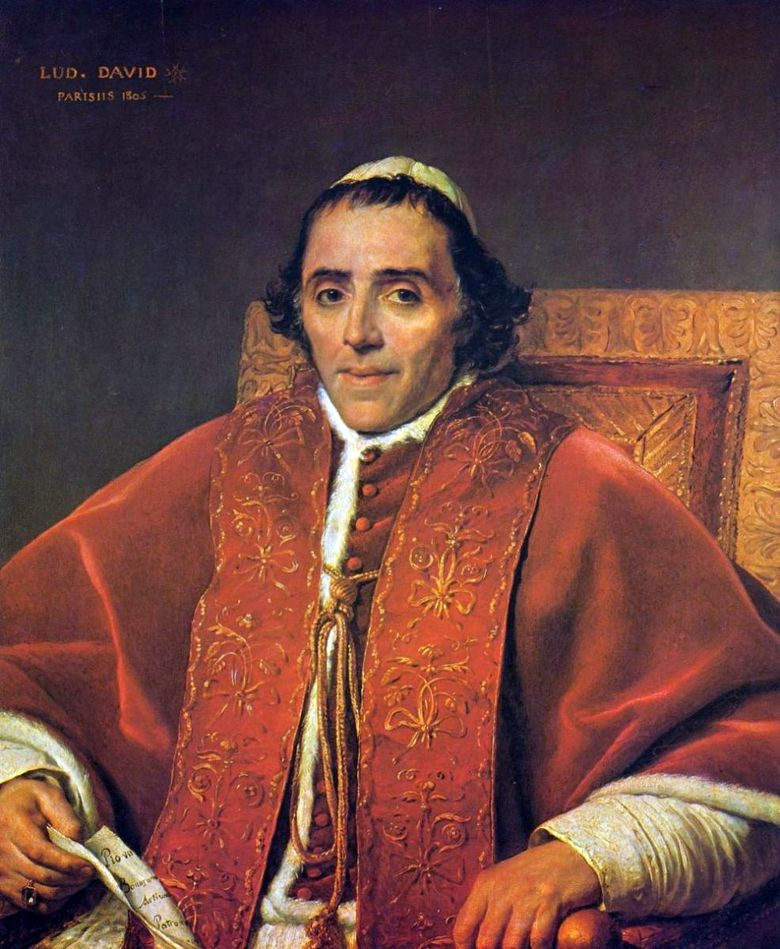 Portrait du pape Pie VII – Jacques Louis David
Portrait du pape Pie VII – Jacques Louis David The anointing of Napoleon I and the coronation of Josephine by Jacques Louis David
The anointing of Napoleon I and the coronation of Josephine by Jacques Louis David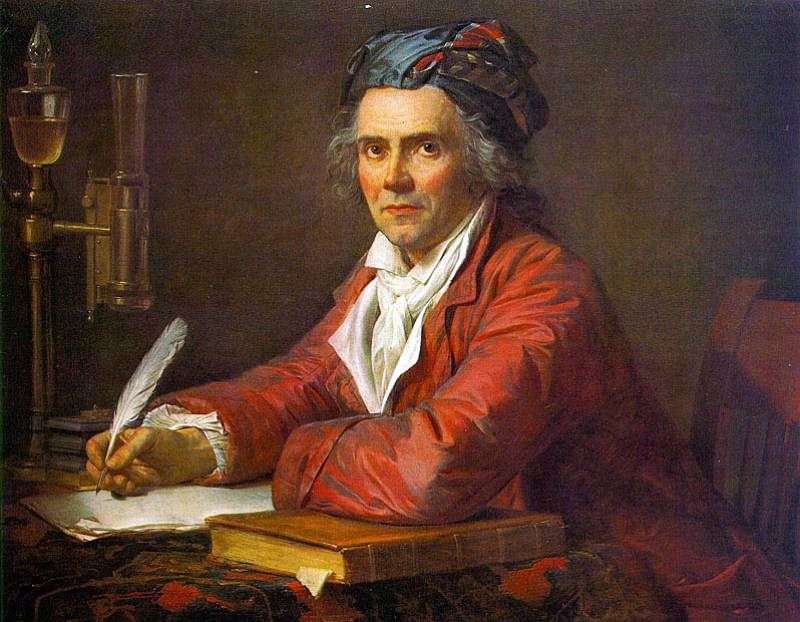 Portrait of Dr. Alfons Leroy by Jacques Louis David
Portrait of Dr. Alfons Leroy by Jacques Louis David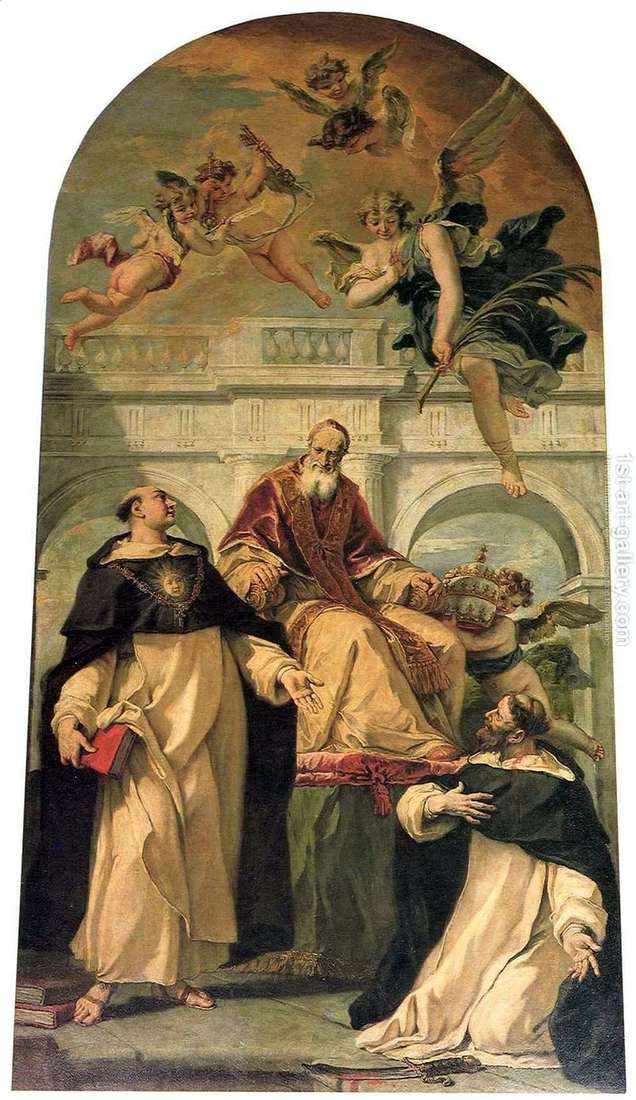 Pius V, Saints Peter and Thomas Aquinas by Sebastiano Ricci
Pius V, Saints Peter and Thomas Aquinas by Sebastiano Ricci Portrait of Napoleon in the Imperial Study by Jacques Louis David
Portrait of Napoleon in the Imperial Study by Jacques Louis David Zinaida and Charlotte Bonaparte by Jacques Louis David
Zinaida and Charlotte Bonaparte by Jacques Louis David